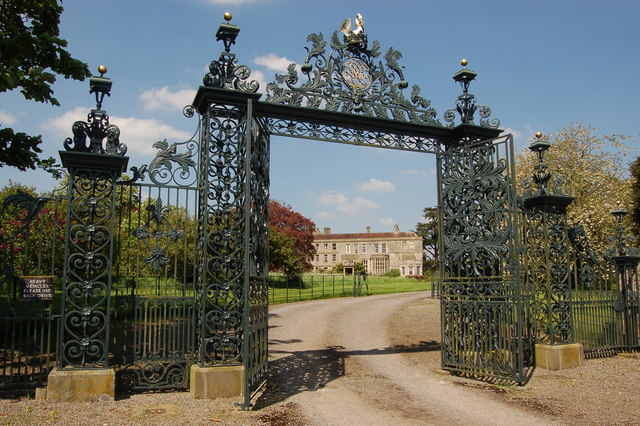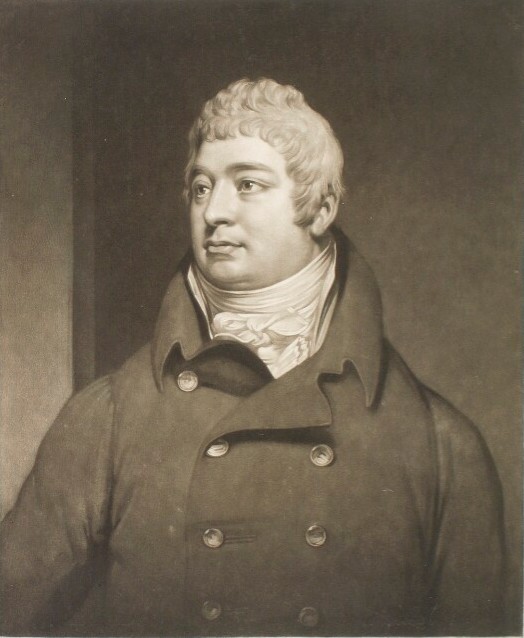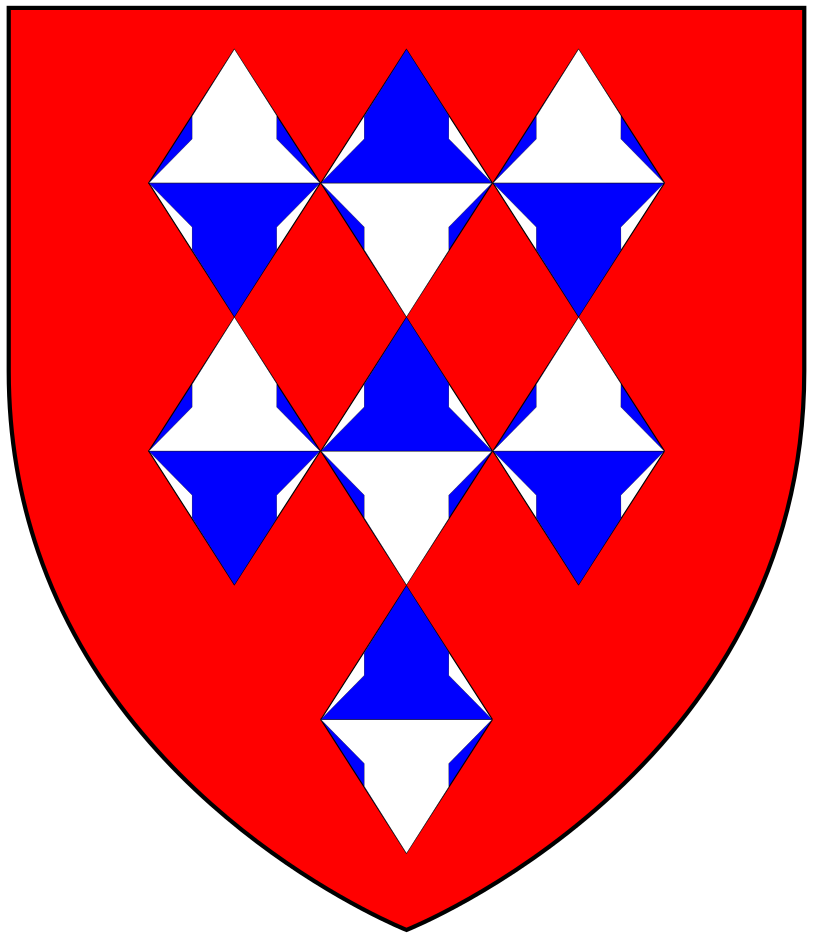|
Guise Baronets
There have been two baronetcies created for the Guise family, one in the Baronetage of England and one in the Baronetage of Great Britain. The latter creation is extant as of 2014. The Guise Baronetcy, of Elmore in the County of Gloucester, was created in the Baronetage of England on 10 July 1661 for Christopher Guise, Member of Parliament for Gloucestershire. The second Baronet also sat as Member of Parliament for Gloucestershire. The third represented Gloucestershire and Great Marlow in the House of Commons. The fourth Baronet was Member of Parliament for Aylesbury. The fifth Baronet represented Gloucestershire in Parliament. This title became extinct on his death in 1783. The Guise Baronetcy, of Highnam Court in the County of Gloucester, was created in the Baronetage of Great Britain on 9 December 1783 for John Guise, the cousin and heir male of the last Baronet of the 1661 creation. He was the great-grandson of Henry Guise, younger brother of the first baronet. The secon ... [...More Info...] [...Related Items...] OR: [Wikipedia] [Google] [Baidu] |
Memorial To Sir John Guise In Gloucester Cathedral
A memorial is an object or place which serves as a focus for the memory or the commemoration of something, usually an influential, deceased person or a historical, tragic event. Popular forms of memorials include landmark objects or works of art such as sculptures, statues or fountains and parks. Larger memorials may be known as monuments. Types The most common type of memorial is the gravestone or the memorial plaque. Also common are war memorials commemorating those who have died in wars. Memorials in the form of a cross are called intending crosses. Online memorials are often created on websites and social media to allow digital access as an alternative to physical memorials which may not be feasible or easily accessible. When somebody has died, the family may request that a memorial gift (usually money) be given to a designated charity, or that a tree be planted in memory of the person. Those temporary or makeshift memorials are also called grassroots memorials.''Gr ... [...More Info...] [...Related Items...] OR: [Wikipedia] [Google] [Baidu] |
High Sheriff Of Gloucestershire
This is a list of Sheriffs and High Sheriffs of Gloucestershire, who should not be confused with the Sheriffs of the City of Gloucester. The High Sheriff is the oldest secular office under the Crown (in England and Wales the office previously known as sheriff was retitled High Sheriff on 1 April 1974). Formerly the Sheriff was the principal law enforcement officer in the county but over the centuries most of the responsibilities associated with the post have been transferred elsewhere or are now defunct, so that the High Sheriff's functions are now largely ceremonial. The High Sheriff changes every March. As of 2006, the Sheriff's territory or bailiwick is covered by the administrative areas of Gloucestershire County Council and of South Gloucestershire District Council. Sir Robert Atkyns, the historian of Gloucester, writing in 1712 stated that no family had produced more Sheriffs of this county than Denys. Sheriffs 12th and 13th century *1071–c. 1082: Roger de Pitres (R ... [...More Info...] [...Related Items...] OR: [Wikipedia] [Google] [Baidu] |
Peerage
A peerage is a legal system historically comprising various hereditary titles (and sometimes non-hereditary titles) in a number of countries, and composed of assorted noble ranks. Peerages include: Australia * Australian peers Belgium * Belgian nobility Canada * British peerage titles granted to Canadian subjects of the Crown * Canadian nobility in the aristocracy of France China * Chinese nobility France * Peerage of France * List of French peerages * Peerage of Jerusalem Japan * Peerage of the Empire of Japan * House of Peers (Japan) Portugal * Chamber of Most Worthy Peers Spain * Chamber of Peers (Spain) * List of dukes in the peerage of Spain * List of viscounts in the peerage of Spain * List of barons in the peerage of Spain * List of lords in the peerage of Spain United Kingdom Great Britain and Ireland * Peerages in the United Kingdom ** Hereditary peer, holders of titles which can be inherited by an heir ** Life peer, members of the peerage of the United ... [...More Info...] [...Related Items...] OR: [Wikipedia] [Google] [Baidu] |
Supporters (heraldry)
In heraldry, supporters, sometimes referred to as ''attendants'', are figures or objects usually placed on either side of the shield and depicted holding it up. Early forms of supporters are found in medieval seals. However, unlike the coronet or helmet and crest, supporters were not part of early medieval heraldry. As part of the heraldic achievement, they first become fashionable towards the end of the 15th century, but even in the 17th century were not necessarily part of the full heraldic achievement (being absent, for example, in ''Siebmachers Wappenbuch'' of 1605). The figures used as supporters may be based on real or imaginary animals, human figures, and in rare cases plants or other inanimate objects, such as the pillars of Hercules of the coat of arms of Spain. Often, as in other elements of heraldry, these can have local significance, such as the fisherman and the tin miner granted to Cornwall County Council, or a historical link; such as the lion of England an ... [...More Info...] [...Related Items...] OR: [Wikipedia] [Google] [Baidu] |
Coat Of Arms
A coat of arms is a heraldry, heraldic communication design, visual design on an escutcheon (heraldry), escutcheon (i.e., shield), surcoat, or tabard (the latter two being outer garments). The coat of arms on an escutcheon forms the central element of the full achievement (heraldry), heraldic achievement, which in its whole consists of a shield, supporters, a crest (heraldry), crest, and a motto. A coat of arms is traditionally unique to an individual person, family, state, organization, school or corporation. The term itself of 'coat of arms' describing in modern times just the heraldic design, originates from the description of the entire medieval chainmail 'surcoat' garment used in combat or preparation for the latter. Roll of arms, Rolls of arms are collections of many coats of arms, and since the early Modern Age centuries, they have been a source of information for public showing and tracing the membership of a nobility, noble family, and therefore its genealogy across tim ... [...More Info...] [...Related Items...] OR: [Wikipedia] [Google] [Baidu] |
Sir Anselm Guise, 6th Baronet
Sir Anselm William Edward Guise, 6th Baronet (18 September 1888 – 12 September 1970) was an English soldier, landowner, and magistrate, of Elmore Court, Gloucester. He was High Sheriff of Gloucestershire in 1926. Life Guise was the son of Sir William Francis George Guise, 5th Baronet, by his marriage to Ada Caroline Coope, and was educated at Eton. During the First World War, he was commissioned into the Gloucestershire Yeomanry and rose to the rank of captain.''Burke’s Peerage'', volume 2 (2003), p. 1703 On 17 January 1920, he succeeded his father in the Guise baronetcy, created for an ancestor in 1783. His father left him an estate of , part of the manor of Elmore''The Gardeners' Chronicle: A Weekly Illustrated Journal of Horticulture and Allied Subjects'' (Gardeners’ Chronicle, 1921), p. 13 which in 1262 had been granted to their ancestor Anselm de Gyse by John of Burgh, a son of Hubert de Burgh, 1st Earl of Kent, after Anselm had married a cousin of Burgh's. Within ... [...More Info...] [...Related Items...] OR: [Wikipedia] [Google] [Baidu] |
Sir Berkeley Guise, 2nd Baronet
Sir Berkeley William Guise, 2nd Baronet (14 July 1775 – 23 July 1834) of Highnam Court in the parish of Churcham, Gloucestershire, was a British landowner and Whig Member of Parliament. Origins He was the eldest son of Sir John Guise, 1st Baronet (1733–1794), of Highnam Court, whom he succeeded in 1794, inheriting Highnam Court. He also inherited the Gloucestershire estates of Elmore Court, the original seat of the Guise family, and Rendcomb, on the death in 1807 of his cousin Jane Guise, wife of Shute Barrington (1734-1826), Bishop of Durham. Career He was educated at Eton College (1791) and at Christ Church, Oxford (1794). In 1801 he was appointed verderer and deputy warden of the Forest of Dean, which office he retained until his death. In 1807 he was appointed Sheriff of the City of Gloucester and in 1813 as Mayor of Gloucester. He was commissioned as a captain in the North Gloucestershire Militia on 8 June 1798, and on 14 April 1809 he was appointed as Lieutenant-Colo ... [...More Info...] [...Related Items...] OR: [Wikipedia] [Google] [Baidu] |
Blazon Of Guise Baronets Of Highnam (1783)
In heraldry and heraldic vexillology, a blazon is a formal description of a coat of arms, flag or similar emblem, from which the reader can reconstruct the appropriate image. The verb ''to blazon'' means to create such a description. The visual depiction of a coat of arms or flag has traditionally had considerable latitude in design, but a verbal blazon specifies the essentially distinctive elements. A coat of arms or flag is therefore primarily defined not by a picture but rather by the wording of its blazon (though in modern usage flags are often additionally and more precisely defined using geometrical specifications). ''Blazon'' is also the specialized language in which a blazon is written, and, as a verb, the act of writing such a description. ''Blazonry'' is the art, craft or practice of creating a blazon. The language employed in ''blazonry'' has its own vocabulary, grammar and syntax, which becomes essential for comprehension when blazoning a complex coat of arms. Other ... [...More Info...] [...Related Items...] OR: [Wikipedia] [Google] [Baidu] |
Sir William Guise, 5th Baronet
Sir William Guise, 5th Baronet (1737 – 6 April 1783), was a British politician who accompanied Edward Gibbon on his Grand Tour of Italy and sat in the House of Commons between 1770 and 1783. Guise was the son of Sir John Guise, 4th Baronet of Elmore Court and Rendcombe, Gloucestershire and his wife Jane Saunders, daughter of John Saunders of Mongewell, Oxfordshire. He entered Lincoln's Inn and Queen's College, Oxford in 1754 and was awarded MA on 29 October 1759. Between 1763 and 1765 he undertook the Grand Tour when he met Edward Gibbon at Lausanne and accompanied him to Italy “in great harmony and good humour”. He succeeded his father in the baronetcy in 1769. In August 1770 Guise was returned unopposed as Member of Parliament for Gloucestershire Gloucestershire ( abbreviated Glos) is a county in South West England. The county comprises part of the Cotswold Hills, part of the flat fertile valley of the River Severn and the entire Forest of Dean. The count ... [...More Info...] [...Related Items...] OR: [Wikipedia] [Google] [Baidu] |
Sir John Guise, 4th Baronet
Sir John Guise, 4th Baronet (1701 – May 1769), of Elmore Court and Rendcomb, both in Gloucestershire, England, was an English Whig politician who sat in the House of Commons from 1722 to 1727. Early life Guise was the only surviving son of Sir John Guise, 3rd Baronet and his first wife. He was educated at Marlborough between 1709 and 1711 and matriculated at New College, Oxford on 27 June 1720, aged 19. Career Guise was returned as a Whig Member of Parliament for Aylesbury at the 1722 British general election. There is no record of a vote by him. He lost his seat at the 1727 British general election to a follower of Walpole. He stood at a by-election for Great Marlow in 1731, where his father had an electoral interest but was defeated and did not stand again. Later life and legacy Guise married Jane Saunders, the only daughter of John Saunders of Mongewell, Oxfordshire, by a settlement dated 14 June 1732. He succeeded his father in the baronetcy on 16 November 1732. In 173 ... [...More Info...] [...Related Items...] OR: [Wikipedia] [Google] [Baidu] |
Sir John Guise, 3rd Baronet
Sir John Guise, 3rd Baronet (c. 1677–1732) of Elmore Court, Gloucestershire was a British landowner and politician who sat in the House of Commons between 1705 and 1727. Guise was the only son of Sir John Guise, 2nd Baronet and his wife Elizabeth Howe, daughter of John Grubham Howe, MP of Compton Abdale, Gloucestershire and Langar, Nottinghamshire. He was granted the office of Constable of Gloucester Castle in May 1690, at the age of 12 and his father put him forward at the1695 general election for Cirencester. He was unsuccessful there. He succeeded to the baronetcy on the death of his father on 19 November 1695 and he tried to replace his father as MP for Gloucestershire by standing in the ensuing by-election. Despite spending £1,000, he was defeated. In 1697 he was Colonel of the White Regiment of Gloucestershire Militia.Col George Jackson Hay, ''An Epitomized History of the Militia (The Constitutional Force)'', London:United Service Gazette, 1905, p. 118./ref> Guise m ... [...More Info...] [...Related Items...] OR: [Wikipedia] [Google] [Baidu] |
Sir John Guise, 2nd Baronet
Sir John Guise, 2nd Baronet (c.1654 – November 1695) of Elmore Court, Gloucestershire was an English landowner and Member of Parliament. Life He was born the only son of Sir Christopher Guise, 1st Baronet of the Elmore baronets of Gloucestershire and educated at Christ Church, Oxford, where he matriculated in 1669. He then travelled in France for a while. He succeeded his father to the baronetcy and to Elmore Court in 1670. He acted as a local Justice of the Peace and as a Deputy-Lieutenant of Gloucestershire (?1674-81, 1689-death). He was Mayor of Gloucester for 1690–91 and Vice-Admiral of Gloucestershire from 1691 to his death. He was elected the Member of Parliament for Gloucestershire in February 1679, August 1679 and 1681 but defeated in the election of 1685 by the Court party candidate and forced to take refuge in the Netherlands. He returned in 1688 with William of Orange and then took part in the capture of Bristol as Colonel of a foot regiment. Re-elected for Glou ... [...More Info...] [...Related Items...] OR: [Wikipedia] [Google] [Baidu] |






